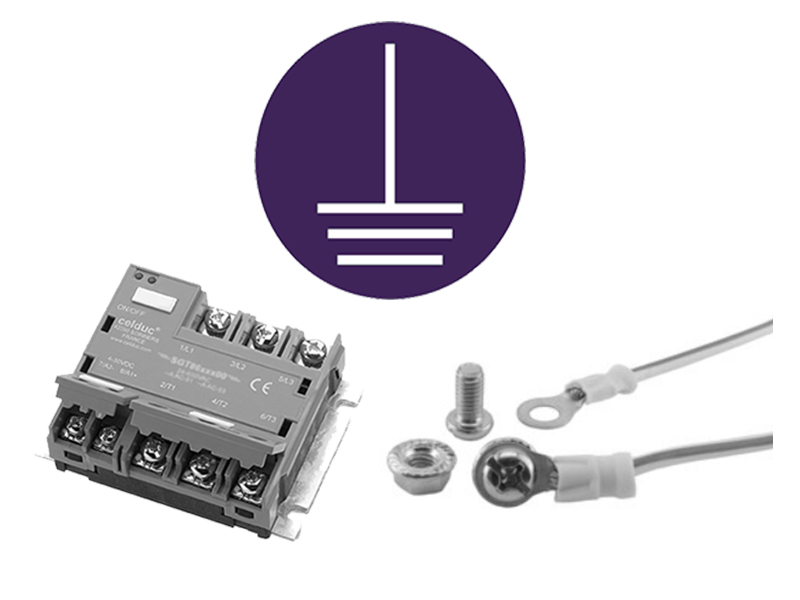Blog - TECHNICAL TIPS & TRICKS - Solid State Relays - Grounding/earthing of SSR assemblies
 How to ensure grounding/earthing of SSR assemblies ?
How to ensure grounding/earthing of SSR assemblies ?Earthing is the method of transmitting the instant electricity discharge directly to the ground through low resistance wires or electrical cables.
So it’s one of the most important parts of setting everything up in order to not cause a fire or electrocute yourself. That is rather important !
So there are of course many ways to ground your solid state relays and we’ll go over a few for you in this article.
Generally, anything metal is required to be grounded… the base of a solid state relay is metal … so if the SSR is mounted inside metal enclosure, the enclosure must be grounded or covered for protection against dangerous voltages.
The decision as to which of the two protection measures is implemented depends on the design and on whether the switching devices are accessible when the power in ON.
If it is ensured that the switching devices can only be touched when not live, then no grounding is necessary.
If this cannot be ensured, then grounding is necessary.
What does EN 60947-1 say ?
“Exposed conductive parts which could be dangerous must be electrically connected to one another and to a protective conductor connection which is in turn connected to a ground connection.”
EN60947-1 doesn’t require any test. This is why we recommend to test your mounting according to EN60950-1.
If our SSR is fixed on a metal plate, the grounding of its plate is done by the fixing screws. The grounding of the assembly must be done with a wire, a tab and a bolt attached through a separate hole from fixing screws. If the plate is painted, the paint must be removed around the fixing screws and the protective earth connection.
This case is common and this solution is compliant with EN60947-4-3.
If our Solid State Relay is mounted on a heatsink, the grounding of its plate is done by the fixing screws. The grounding can be done with different ways:
If you use the DIN rail as grounding mean, the SSR assembly will fulfill the EN60950-1 (2.6.3.3) removing the need of a protective earth connection on the Solid State Relay.
